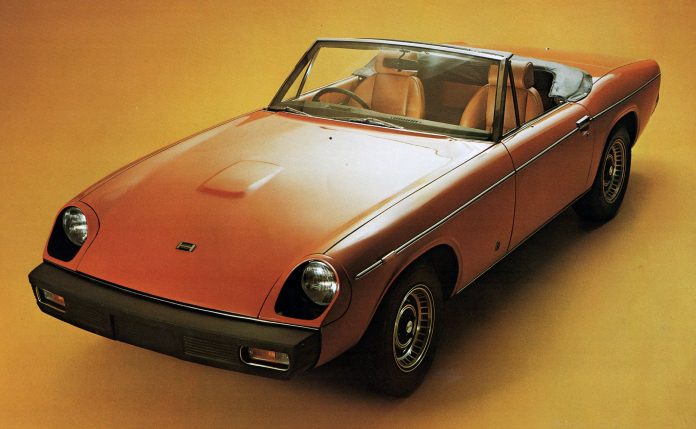In the early 1970s, Philip Cadman dreamed of owning a Jensen Healey, the West Bromwich-built sports car.
He drove to Birmingham every day for work, and on the way to the city center he often had to wait at the traffic lights at the end of Soho Hill, which overlooked the Hockley Flyover.
At that point in time, Mist’s garage was owned by Jensen and Saab franchises. While he waited for the traffic light, he looked longingly at the Jensen Healey in the shop window.
At that time he only noticed two sports cars, one was the Jensen, the other the Alfa Romeo Spider. Philip had first become a fan of the Spider when he saw the 1967 film The Graduate when it aired on television, the main character who drove a Series 1 model. However, the Jensen was made locally and that made it more attractive to him.
“I actually went to Mist’s a couple of times to see Healey,” remembers Philip. “On both occasions the salesman – Phil Norridge, I still have his business card – was very nice, showed me everything about the car and gave me brochures. I say nice because he must have noticed that I couldn’t afford to buy a car like this, so there was no chance of selling it.
“When I think back, even if I had the money to buy a used Healey, I couldn’t have afforded the insurance! Still, he might think – like me – that one day I might be able to afford one.
“Of course, my dream of having my own Healey was somewhat shattered when Jensen Motors ceased trading in 1976. A few years later, when I could afford both the cost of a used model and insurance, I seriously considered buying one using common sense.
“Still, I regret never driving a Jensen Healey, especially since I recently found out that the car was the first to use a brand new two-liter Lotus engine.
“When production of the Austin Healey 3000 ceased, Donald Healey spoke to Jensen Motors about a replacement. Kjell Qvale, the largest Austin Healey dealer in the US, also wanted a replacement chairman.
“Ultimately, the Jensen Healey was developed as a joint venture between Donald Healey, his son Geoffrey and Jensen Motors. The car became Jensen’s best-selling model, with around 10,500 units built, most of which were exported to North America. “
Various engines were tried at the prototype stage, but nothing really worked until Lotus’ Colin Chapman offered the company’s new 1973 Lotus 907 with two overhead camshafts and 16 valves.
It was the first modern engine with two overhead camshafts and four valves per cylinder, mass-produced on an assembly line. As used in the Healey, the engine produced 140 horsepower, which gave the car a top speed of 119 mph with a time from zero to 60 mph of 7.8 seconds.
“For looks, the early cars had chrome bumpers,” adds Philip, “while later cars had thick black rubber bumpers to meet US government regulations.
“Even so, later cars were fitted with a five-speed gearbox that replaced the four-speed box of the early model. The interior design and appearance have also been improved.
“Just before Jensen ceased trading, a coupe version of the Jensen Healey was introduced: the Jensen GT. I thought it was a very nice looking car, a little more suitable for this country than the Healey (our weather), but only around 500 made. Looking back, I think about what could have been. “

